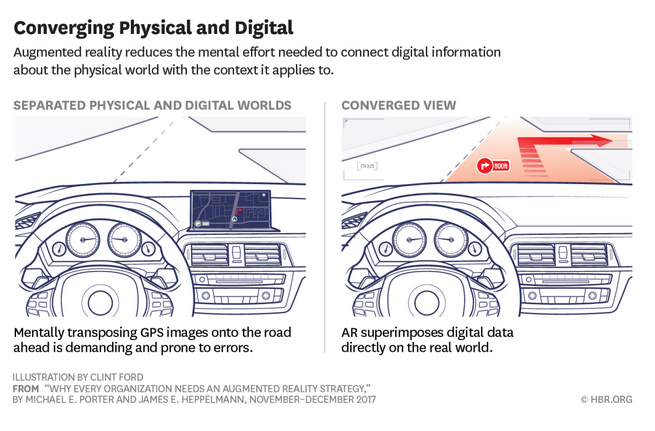A Manager’s Guide to Augmented Reality — from hbr.org by Michael Porter and James Heppelmann
Augmented reality technologies promise to transform how we learn, make decisions, and interact with the physical world. In this package we explain what AR is, how its applications are evolving, and why it’s so important.
Excerpt (emphasis DSC):
Though still in its infancy, AR is poised to enter the mainstream; according to one estimate, spending on AR technology will hit $60 billion in 2020. AR will affect companies in every industry and many other types of organizations, from universities to social enterprises. In the coming months and years, it will transform how we learn, make decisions, and interact with the physical world. It will also change how enterprises serve customers, train employees, design and create products, and manage their value chains, and, ultimately, how they compete.
In this article we describe what AR is, its evolving technology and applications, and why it is so important. Its significance will grow exponentially as SCPs proliferate, because it amplifies their power to create value and reshape competition. AR will become the new interface between humans and machines, bridging the digital and physical worlds. While challenges in deploying it remain, pioneering organizations, such as Amazon, Facebook, General Electric, Mayo Clinic, and the U.S. Navy, are already implementing AR and seeing a major impact on quality and productivity. Here we provide a road map for how companies should deploy AR and explain the critical choices they will face in integrating it into strategy and operations.









